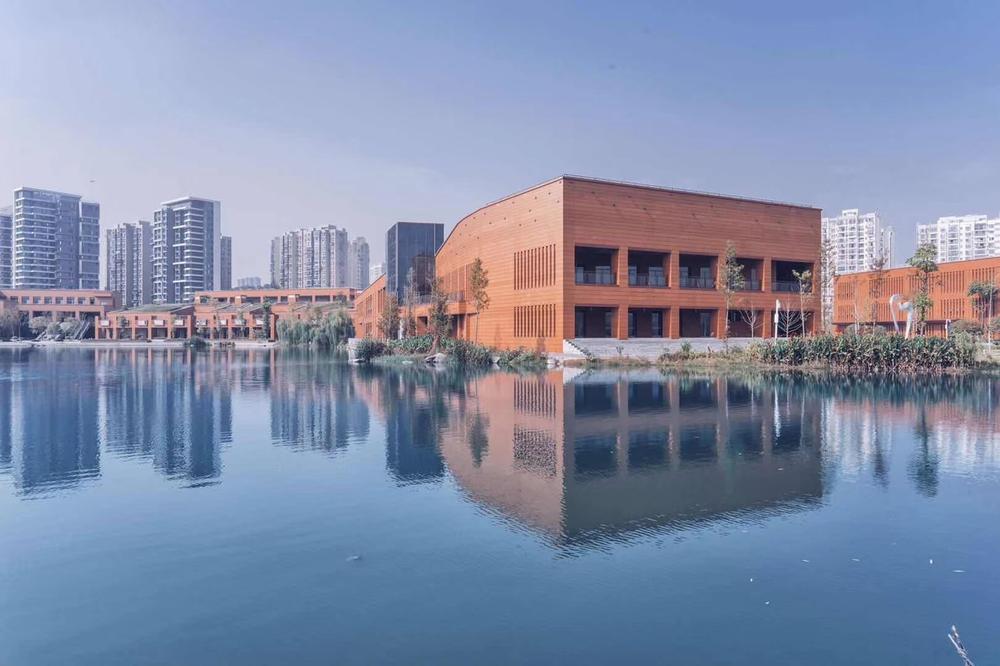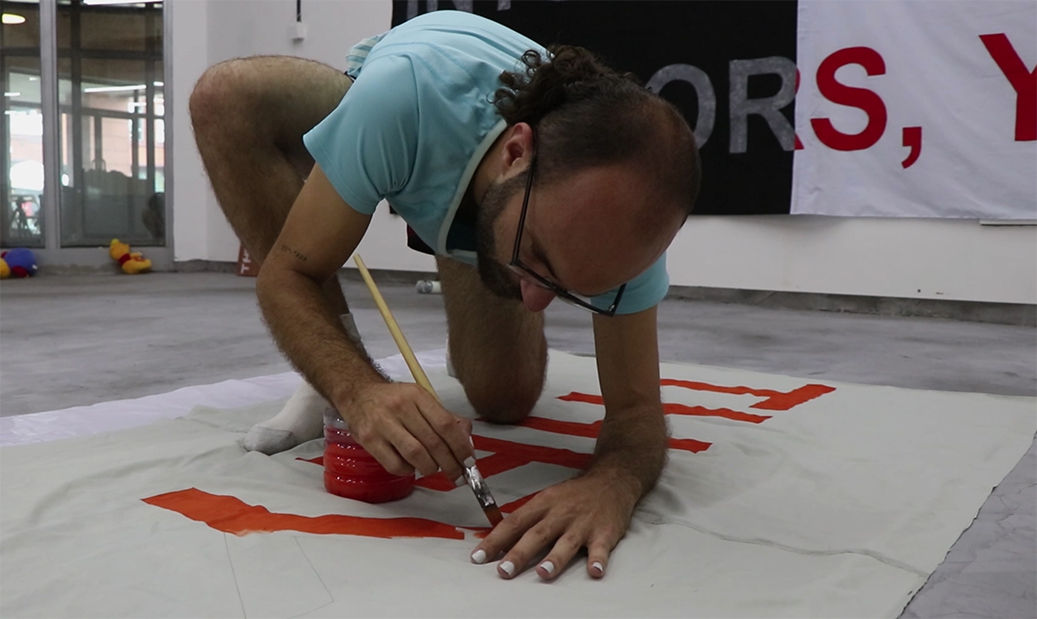The Advance Art Museum in Changsha recently launched the first international artist residency program in Hunan province. We interviewed curator and residency initiator Daisy Zhang to learn more:
China Residencies: How and when did the Advance Art Museum museum start?
Daisy Zhang: Advance Art Museum is an independent public welfare art organization serving the public, found by Mr Wu Kuo, chairman of the Advance group and CEO of 58 Zhong Chuang, in July 2014. The museum is located on an ancient street Taipingli, in the center of the city of Changsha, and hosts exhibitions, collections, as well as education and communication departments. The museum was founded to discover and cultivate independent thinking and practices of young artists, breakthrough inspiration and to enlighten the public's perception of art. The museum aims to strengthen the regional contemporary art ecosystem, activate the local art ecology ,and strengthen international cultural cooperation and academic exchange.
CR: Why is Advance Art Museum starting a residency?
DZ: In the course of the development of art history, almost every major scientific and technological change (and the changes of concept brought about by these technological changes) will have a great impact on the art industry. Nowadays, the development of the experience economy and mobile Internet is affecting artistic boundaries, pushing art to develop in interdisciplinary directions, using information technology and interactive media, also building new ways of art exchanges. This trend is profoundly changing people's social life, culture, art and other fields. In 2018, Advance Art Museum Unite 58 Small Town launched the A+ Artist In Residence International Exchange Program, to link art and the new economy in the current era of big data. The residency explores new development directions of contemporary art, cross-examines art ontology and forms the border in line with the times to explore and share the spirit of art practice.
CR: What is the 58 Town project, and how does it relate to the museum?
DZ: Advance Art Museum and 58 Town all founded by Mr. Wu Kou. 58 Town is a large real estate development located in Changsha by the Xiangjiang river, created in 2017. The area is designed to include "the architectural art, live in mobile, intelligent application, three industry as the core, the media art collection ecological landscape, the wisdom of science and technology, headquarter economy, formed the policy service, upgrade of enterprises, venture capital, tax optimization, talent away, wisdom, supporting, resource integration, eight super management service advantage to ecosystem and the 4.0 version of the wisdom, known as the world's innovation field in the park”.

58 Town development in Changsha
CR: Can you tell us a bit about the museum founder and chairman, Mr Wu Kuo?
DZ: Mr. Wu Kuo is a post-80s entrepreneur with excellent aesthetic taste. In early 2010, he started a design business which grew into the 58 Group, focusing on investment, development, and management of projects related to arts and commerce. He is good at grasping market opportunities accurately and adhering to the unique and innovative business concepts to create projects in line with the spirit of the times. He has been involved in cultural and creative art, chain catering, investment and other fields. He owns more than 20 excellent brands and projects such as Taipingli arts district and creative community, the Advance Art Museum, and the A+ residency program. He is a creative entrepreneur leader who is good at influencing trends.
In early 2018, 58 Group launched the national strategic layout, and will establish the 58 Group Alliance in more than 20 most active cities in the future.
CR: Tell us a bit about yourself and your background. What is your role in the residency?
DZ: I studied art and majored is visual communication, and now I am mainly engaged in the operation and management of art institutions. My experience helped me retain my love for the arts. I have worked in large enterprises and well-known media, which gives me a multi-dimensional perspective on the cross-boundary development of art and business. I hope to push the boundary of art further.
Nowadays, the development of mobile Internet and experience economy has profoundly changed people's social life relations. Under such a special inflection point of the era, I hope to observe and record it through the interaction between art and the new economy, and explore and share the artistic practice conforming to the spirit of the era. So we initiated and planned Hunan Province's first annual international residency program -- A+ Artist in Residence International Exchange Program. I am the initiator and planner of the project and will continue to promote the development of the project.
CR: How many people are on staff at the residency?
DZ: We have a team of 15 people that is very engaged and loves this project. This residency project also has deep cooperation with the experimental art commission of Hunan Province to promote cultural interaction and academic exchanges between resident artists and local artists.
CR: What kinds of artists does your residency host? Is it only for contemporary visual artists, or do you also accept proposals for film, new media, dance, writers, or other creative practices?
DZ: The selection of resident artists in 2018 focuses on artists or art groups with independent artistic thinking and breakthrough practice to conduct diversified collision of cultural integration in cities, explore and share art practices in line with the spirit of the times. Artists and curators are mainly in the field of contemporary art creation, and there is no restriction on creation media.

Adam Farcus working on their installation, "Signs"
CR: Who is on the review panel, selecting the resident artists?
DZ: Advance Art Museum and invited curators Yuan Tingxuan, resident planning Wen Peng and the core members of Hunan Experimental Arts Committee set up the jury team together.
CR: What expenses does the museum cover? What the residency provide for artists? What must the artist provide for themselves?
During the residence, we will provide artists with travel reimbursements of up to 2,000 rmb for domestic round-trip transportation (airline ticket or high-speed railway ticket) and an additional subsidy of 2,000 for the round-trip airline ticket from the foreign city to Changsha. We also offer 2000RMB for creative materials, accommodation, studio space, and meals (lunch and dinner). The residency provides artist assistants and translators, and after the end of the resident period, the residents will take part in the Advance Art Museum's exhibition for residency artists. The artist must give one work to the museum collection: at the end of the resident, residency organizer will select one of the Artist’s works during the artist's residence period as a collection.
Resident artists will enter the artist database of Advance Art Museum, as a candidate artist for Chinese and overseas exhibitions, artists' residence and cooperation with art institutions. Residents will have the opportunity to participate in city visits, open studios, academic discussions, salon lectures or related educational exchange activities.
The residence project is a non-profit academic activity, and the artists need to assume the cost of expenditures besides the above-mentioned things.
CR: Have you already hosted any artists in residence so far?
DZ: In 2018, A+ Artist in Residence International Exchange Program was held three times: in July, September and November. Each phase has 3 resident places, and we have received application materials from over a dozen countries and nearly 100 artists. We are honored to have worked together with nine of them: American artists Eric Scott Nelson, Adam Farcus, Spanish artist Rafael, Australian artist Simon Pericich, Canadian artist Justin Tyler Tate, Chinese artist Liu Hao, Mao Wei, Dai Hua and Qi Jiajia.

Work by Mao Wei in the exhibition Dynamic Leviathan (2018)
CR: What kind of artwork have the resident artists created? Can you give us an example or two of some of the most interesting projects by residents:
DZ: During they stay in Changsha, Liu Hao had an in-depth study of the Changsha ‘Fireworks Building’ community. This old building of Changsha has undergone a series of economic and corporate system reforms. The builders, owners and users of this building have been neglected, and are attached to the old building. Liu Hao’s artwork series unfolds based upon these hidden stories. Rafael brings us a trilogy of video which is an allegory about divorce, and also about an incident in which Koreans unsuccessfully fled to North Korea. During his residency in Changsha, he completed a video series about Empress Myung-Sung, the last empress of North Korea. Three sets of videos explore the complexities of collective memory and history in visual metaphorical language. Simon Pericich picked up abandoned garbage in Changsha. By reconstructing and remaking materials, he reconstructed history in a somewhat Frankenstein Gothic style. Artists Adam Farcus, Eric Scott Nelson, and Mao Wei respectively responded to the impact of mobile internet on international politics, ideology, and personal lives, how Internet rights formed a new order for users, and the social management of government systems through the Internet.
CR: Can you tell us a bit more about the opportunities you provide for residents to meet people in the local creative scene in Changsha?
DZ: During the stay, we have held seminars for resident artists and local artists. We organized shared activities in universities, an open studio night in the residency space, and an exhibition of residents' works to promote the interactive communication between resident artists and local artists, students, the public, and the media.

Residents Adam Farcus, Eric Scott Nelson & Mao Wei at during their artist roundtable
CR: What is Changsha’s art scene like, overall?
DZ: Changsha is an inland city in China, and contemporary art scene here is not very developed. Although there are many good artists from here, they have left Changsha and are active in China's first-tier cities or on the international stage. But in recent years, a phenomenon has emerged: more and more artists in first-tier cities and practitioners in various industries have returned to Changsha successively, which is a good trend, although it will still take time for a greater transformation to take place.
China is now in an era of rapid iteration. It's a turning point, and we hope that we can encourage observers of the current era to come conduct active research and recordings of the times through the A+ Residency.
CR: Is there anything else you'd like to add about the program, your mission, or the opportunities you provide for artists?
DZ: Thank you very much for your support and attention! We will continue to think about and promote the development of this residency project and look forward to further cooperation.
This interview was conducted over email by Kira Simon-Kennedy for China Residencies in October 2018.
